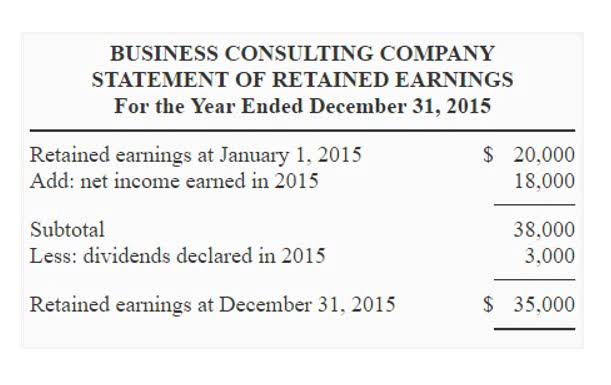
Note any information related to the non-controlling interest in the disclosures to the consolidated financial statements. Non-consolidated financial statements are the separated financial statement of each individual company. It is the same to consolidate financial statements, consist of the Income statement, Statement of Financial Position, Statement of Cash Flow ad Statement of Change in Equity. Unrealized gains or losses can make consolidated financial statements inaccurate, especially if they result from intercompany transactions. These adjustments ensure that the financial statements reflect only realized gains and losses from external transactions. A consolidated income statement, also known as the consolidated statement of operations and comprehensive income, aggregates the income of a parent company along with its subsidiaries.
History of IFRS 10
Dividends received from the subsidiary are recognized as income in the parent company’s income statement, rather than reducing the carrying amount of the investment. The subsidiary’s own assets and liabilities wouldn’t show up on any consolidated statements released by the parent company. However, when the parent has a non-majority ownership stake in the subsidiary, or cannot exert significant influence over its operations, then it uses other consolidation methods like the cost and equity methods. The consolidated statement of cash flows (consolidated statement of changes in funds) shows cash inflows and outflows for an entity and its subsidiaries. For majority-owned subsidiaries (over 50% ownership), their cash flows are fully consolidated into the parent’s statement. A consolidated balance sheet, also known as a consolidated statement of financial position, combines the assets, liabilities, and shareholders’ equity of a parent company and its subsidiaries in a single document.
- Consolidation also refers to the union of smaller companies into larger companies through mergers and acquisitions (M&A).
- Learn the difference between these statements and why you would pick one over the other.
- The subsidiary’s own assets and liabilities wouldn’t show up on any consolidated statements released by the parent company.
- With Prophix One, you can aggregate data automatically and build consolidated financial statements in less time and with no errors.
- When, however, the parent company owns more than 50 percent of a subsidiary, you will have no choice—you must file a consolidated financial statement.
- For consolidated financials, following a sequence of decisions should significantly streamline the process.
Understanding Consolidated Financial Statements

A consolidated financial statement reports on the entirety of a company with detailed information about each subsidiary. Because ABC owns more than 20% of XYZ (but less than 50%), it will use the equity method of accounting for its unconsolidated subsidiary. ABC must record $400 million in earnings on its income statement since ABC has a 40% stake and exerts some control over XYZ. Also, ABC needs to record the increase in the value of the initial investment, listed on the balance sheet, by $400 million. This is especially true of public companies and private companies that issue financial instruments in a public market—though this depends on the jurisdiction the company operates in. In these situations, producing financial statements is important for remaining compliant with regulatory requirements.

Summing Up Consolidated vs Standalone
If these systems don’t have native integrations, finance teams might be stuck manually exporting data to a common platform—like a spreadsheet. This approach provides a more comprehensive view of the parent company’s financial performance, reflecting its interest in the profits generated by its subsidiaries, regardless of whether those profits are distributed as dividends. To throw a slight wrench into things, some people refer to “combined financials” when they actually mean special purpose statements. Special purpose financial statements are used to satisfy reporting requirements that consolidate entities outside of the reporting standards from the FASB (Financial Accounting Standards Board) via ASC 810. These are usually reporting requirements for a joint venture, tax reporting, or other industry specific reporting.
Consolidated Reporting
- There are two main type of items that cancel each other out from the consolidated statement of financial position.
- In our example, unless the exiting controller saw the regulatory writing on the wall and implemented new accounting procedures to create GLs for the separate legal entities, it’s going to be a tough few months for the accounting team.
- This transfers the debt owed from multiple creditors, allowing the consumer to have a single point of payment to pay down the total.
- The more you know about financial statements, the more likely you’ll be a savvy corporate owner.
The decision to file consolidated financial statements with subsidiaries is usually made on a year-to-year basis and is often chosen because of tax or other advantages that arise. The criteria for filing a consolidated financial statement with subsidiaries is primarily based on the amount of ownership the parent company has in the subsidiary. Standalone financial statements provide information on the financial position consolidated vs unconsolidated of a single entity, such as a parent company or a subsidiary. An unconsolidated subsidiary is a company that is owned by a parent company but whose individual financial statements are not included in the consolidated or combined financial statements of the parent company to which it belongs. Instead, an unconsolidated subsidiary appears in the consolidated financial statements of the parent as an investment.
How Consolidation Works
- These aquifers consist of outwash, terrace, or ice-contact deposits, and they mostly occupy bedrock valleys or areas of interlobate ice marginal deposition.
- Often times, they consist of a group of individual planets held together by their common interests.
- It’s going the other direction, using consolidated data for combined purposes, that can wreak havoc on your time, patience, and resources.
- In financial accounting, to consolidate is for all subsidiaries to report in financial statements under the umbrella of a parent company.
- By consolidating financial statements, companies can identify areas of strength and weakness across their entire organization, allowing them to make more informed decisions about resource allocation and strategic planning.
Consolidation is generally regarded as a period of indecision, which ends when the price of the asset moves above or below the prices in the trading pattern. The consolidation pattern in price movements is broken upon a major news release that materially affects a security’s performance or the triggering of a succession of limit orders. For example, company A buys goods for one price and sells them to another company inside the group for another price. Thus, company A has earned some revenue from selling, but the group as a whole did not make any profit out of that transaction.
Accounting requirements
Eliminating those intercompany interactions allows the reporting entity to avoid double counting activity. Ultimately, whether you choose to use standalone or consolidated financial statements will depend on your specific needs and circumstances. It’s important to understand the differences between the two and how they can impact your decision-making process. Transactions between two affiliated companies are disregarded when preparing the consolidated financial statements. These intracompany transactions do not change the net position of the overall operation.
The more you know about financial statements, the more likely you’ll be a savvy corporate owner. Consolidated financial statements report a parent company’s financial health and include financial information from its subsidiaries. Most investment experts recommend stock investors look at the consolidated statements of a company before making a decision to buy its shares. Aside from that series of decisions, also make sure everyone involved understands the reporting deadlines so the subsidiaries get the parent company all required information far enough in advance. That way, the parent can adequately review the data and ensure they have everything needed for the reporting requirements, as well as the time required to eliminate those pesky intercompany transactions. It’s also important to note that combined financials don’t necessarily include a larger reporting entity operating as the star within the financial solar system.

Investment entities consolidation exemption

